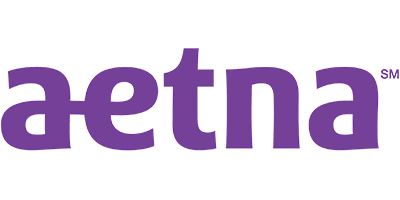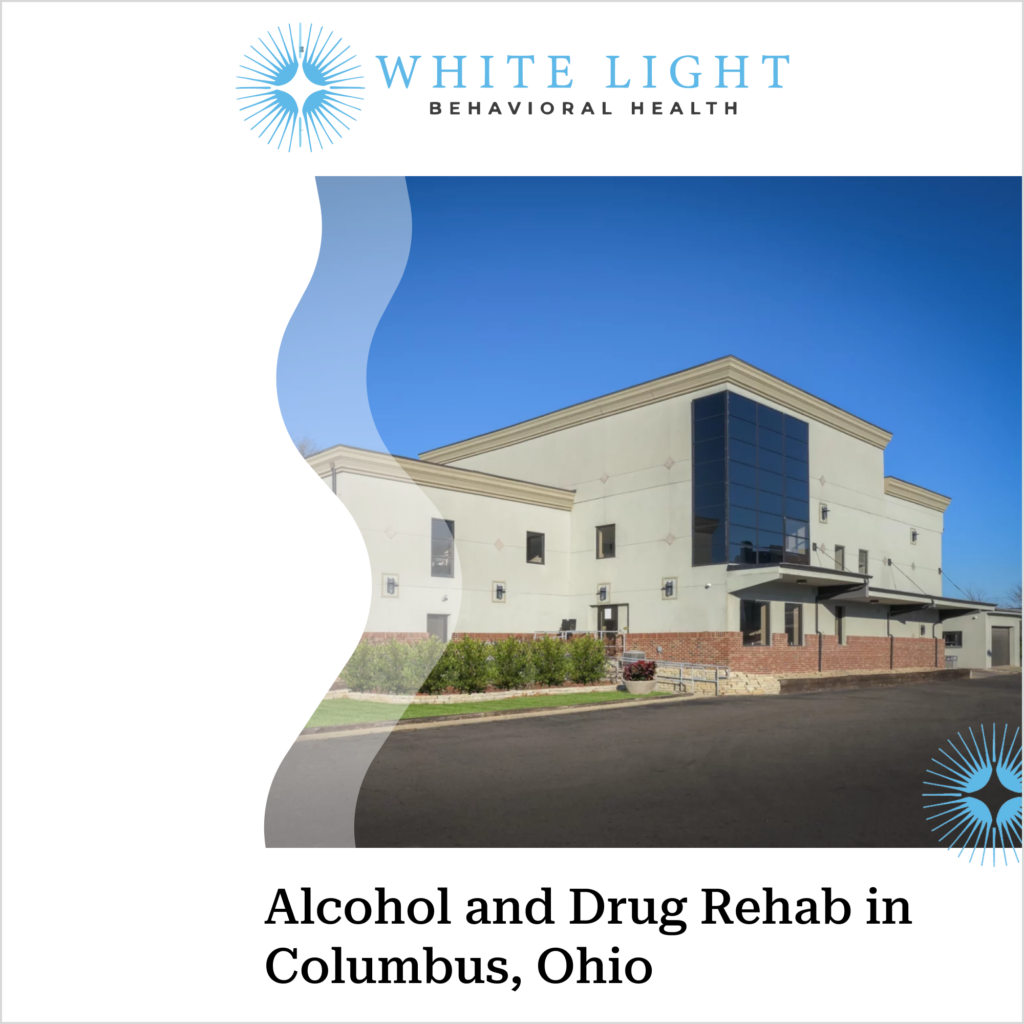United Healthcare in Ohio: Plan Types and Coverage for Drug Rehab and Mental Health

UnitedHealthcare operates as a major health insurer within Ohio’s competitive marketplace, where 13 insurers offered ACA Marketplace plans in 2025, providing comprehensive mental health and substance use disorder coverage under federal parity requirements (HealthInsurance.org, 2024). Ohio’s insurance landscape encompasses 3.21 million Medicaid enrollees representing 27% of the state’s population, alongside 477,793 residents enrolled in ACA Marketplace plans as of 2024, with record-high enrollment driven by expanded behavioral health benefits (USAFacts, 2024; CMS, 2024). The Affordable Care Act mandates that all Ohio health plans cover mental health and substance use disorder services as one of ten essential health benefit categories, while the Mental Health Parity and Addiction Equity Act requires insurers impose no stricter cost-sharing or treatment limitations on behavioral health benefits compared to medical-surgical benefits (CMS, 2023). UnitedHealthcare’s Ohio plans must provide comprehensive drug rehabilitation and mental health coverage including counseling, inpatient treatment, and FDA-approved medications, serving residents within a state where 40% of Medicaid expansion enrollees had primary mental health or substance use disorder diagnoses in 2024, representing over $1 billion in federal funding for behavioral health services (HPIO, 2025).What is UnitedHealthcare’s Market Position in Ohio?
UnitedHealthcare operates as a major health insurance competitor in Ohio’s market, ranking behind Anthem’s dominant 31% market share position (AMA, 2024). The insurer participates across multiple coverage sectors including ACA Marketplace plans, employer-sponsored benefits, and Medicare Advantage offerings within Ohio’s competitive landscape. UnitedHealthcare competes alongside 13 total insurers offering Marketplace plans in 2025, up from 12 the previous year (HealthInsurance.org, 2024).
Ohio’s insurance market structure demonstrates significant concentration with CareSource serving as the state’s largest Medicaid managed care plan covering over 2.1 million members (CareSource, 2023). The competitive environment intensified after Ohio’s Marketplace enrollment jumped 62% from 294,644 to 477,793 enrollees between 2023-2024 (CMS, 2024). UnitedHealthcare’s market positioning faces ongoing changes as 11 insurers are expected to participate in 2026 Marketplace offerings, with two carriers exiting and Antidote Health entering (HealthInsurance.org, 2025).
The insurer’s Ohio operations accommodate diverse coverage needs across employer-sponsored plans averaging $1,735 annual deductibles for single coverage (KFF, 2023). UnitedHealthcare’s market presence extends to behavioral health services, where insurers paid an average of $122.79 per behavioral health claim in 2023, representing 3.8% of total medical costs (PwC, 2023). Nearly all Ohio areas provide residents with at least five different insurers’ Marketplace plan options for 2025 coverage (HealthInsurance.org, 2024). Did you know most health insurance plans cover substance use disorder treatment? Check your coverage online now.Which UnitedHealthcare Plan Types Are Available in Ohio?
UnitedHealthcare offers 4 primary plan categories to Ohio residents: individual ACA Marketplace plans, employer-sponsored group coverage, Medicare Advantage plans, and Medicaid managed care participation. Ohio’s health insurance landscape includes 13 insurers on the ACA Marketplace for 2025, providing residents in nearly all areas with at least 5 different insurers’ plans to choose from (HealthInsurance.org, 2024). UnitedHealthcare participates across these market segments, competing with Anthem, which holds about 31% of Ohio’s health insurance market share (AMA, 2024).
The majority of individual market health plans in Ohio are HMO or EPO type, meaning they offer no coverage for out-of-network non-emergency care (ODI, 2023). Only a minority of Ohio Marketplace plans are PPOs that provide partial out-of-network coverage, making in-network provider availability crucial for patients (ODI, 2023). Ohio’s Marketplace enrollment jumped 62% from about 294,644 in 2023 to 477,793 in 2024, driven in part by the end of continuous Medicaid coverage (CMS, 2024). UnitedHealthcare’s employer-sponsored group plans serve Ohio workers with varying deductible structures, averaging about $1,735 for single coverage annually (KFF, 2023).
UnitedHealthcare’s Medicare Advantage plans compete in Ohio’s senior market, while their Medicaid managed care participation serves a portion of Ohio’s 3.21 million Medicaid enrollees (USAFacts, 2024). HMO plans restrict members to in-network providers except for emergencies, EPO plans eliminate out-of-network coverage entirely without requiring referrals, and PPO plans allow out-of-network access with higher cost-sharing. The ACA caps annual out-of-pocket costs, with the 2024 maximum limit at $9,450 for individual plans, protecting UnitedHealthcare members from catastrophic expenses (CMS, 2023).What Are UnitedHealthcare’s Individual and Family Plans?
UnitedHealthcare’s individual and family plans are ACA Marketplace insurance products structured across four metal tiers: Bronze, Silver, Gold, and Platinum coverage levels. These UnitedHealthcare individual plans operate within Ohio’s expanded insurance marketplace, where 477,793 Ohioans enrolled in 2024 health plans through the ACA Marketplace (CMS, 2024). UnitedHealthcare family coverage options include comprehensive essential health benefits, with deductible ranges varying from $2,000-$7,000 for Bronze plans to $500-$2,000 for Platinum individual policies.
Individual plan premiums for UnitedHealthcare coverage reflect the company’s position among 13 insurers offering ACA Marketplace plans in Ohio for 2025 coverage (HealthInsurance.org, 2024). UnitedHealthcare’s family plan structure includes Bronze tier options with 60% actuarial value and higher deductibles, while Gold and Platinum individual plans provide 80-90% actuarial value with lower out-of-pocket costs. Ohio residents selecting UnitedHealthcare individual coverage benefit from the state’s competitive marketplace, where nearly all areas have at least 5 different insurers to choose from (HealthInsurance.org, 2024).How Do UnitedHealthcare Employer-Sponsored Plans Work?
UnitedHealthcare employer-sponsored plans operate through group insurance arrangements where Ohio employers purchase coverage for their workforce, featuring fully-insured and self-funded plan structures. Fully-insured group plans transfer financial risk to UnitedHealthcare, while self-funded arrangements allow employers to pay claims directly with UnitedHealthcare providing administrative services. The average general annual deductible for employer-sponsored health plans reaches $1,735 for single coverage, similar in Ohio as nationally (KFF, 2023). Group coverage differs significantly from individual market plans through enhanced benefit packages and reduced cost-sharing arrangements.
Employer-sponsored group plans provide superior benefits compared to individual market offerings, including lower deductibles and expanded provider networks. UnitedHealthcare group plans operate within Ohio’s insurance marketplace where 13 insurers offered ACA Marketplace plans in 2025, giving consumers multiple coverage options (HealthInsurance.org, 2024). Group insurance spreads risk across larger employee populations, resulting in more stable premiums and comprehensive coverage. Self-funded employer plans allow customized benefit designs while maintaining compliance with federal regulations including mental health parity requirements.
Cost-sharing structures in UnitedHealthcare employer plans feature lower out-of-pocket maximums compared to individual market plans, which face ACA limits of $9,450 for individual coverage in 2024 (CMS, 2023). Group plans benefit from employer premium contributions, reducing employee costs significantly below individual market rates. Network adequacy requirements ensure UnitedHealthcare maintains sufficient provider relationships, addressing Ohio’s challenge where patients needing behavioral health services are up to 5× more likely to seek out-of-network care (Community Solutions, 2019).What Mental Health Coverage Must UnitedHealthcare Provide in Ohio?
UnitedHealthcare must provide mental health and substance use disorder services as essential health benefits under federal ACA requirements in Ohio (CMS, 2023). The Affordable Care Act mandates coverage for 10 essential health benefit categories, with behavioral health services constituting a core requirement for all health plans. The Mental Health Parity and Addiction Equity Act prohibits insurers from imposing stricter cost-sharing or treatment limits on mental health benefits compared to medical/surgical benefits (CMS, 2023).
Ohio’s state parity law enacted in 2006 remains narrower than federal requirements and has not been updated to align with MHPAEA standards (Ohio Senate, 2020). The state received an “F” grade in national mental health parity performance assessments due to outdated statutes (Ohio Senate, 2020). Federal regulators proposed new enforcement rules in March 2025 to strengthen parity compliance and hold insurers accountable for unequal coverage practices (WHIO, 2025).
Parity violations persist despite federal requirements, with federal audits in 2022 finding numerous compliance failures by insurers nationwide (DOL, 2022). The Department of Labor took enforcement action against health plans that failed parity tests, forcing insurers to remove unequal treatment limitations for behavioral health services (DOL, 2022). Ohio patients needing behavioral health services are up to 5 times more likely to seek out-of-network care compared to patients with medical needs (Community Solutions, 2019).Which Mental Health Services Are Covered?
UnitedHealthcare plans must cover 6 essential mental health services under federal law: outpatient therapy, inpatient psychiatric care, intensive outpatient programs, partial hospitalization, crisis intervention, and medication management (CMS, 2023). These behavioral health services accounted for 3.8% of all medical claim costs in 2023, more than double their share of 1.8% in 2018 (PwC, 2023). The Mental Health Parity and Addiction Equity Act requires that insurance plans impose no stricter cost-sharing or treatment limits on mental health benefits than on medical benefits (CMS, 2023).
Mental health coverage includes psychiatric medications, with all 3 FDA-approved medications for opioid use disorder covered by Ohio’s Medicaid program (ODM, 2021). Insurers paid an average of $122.79 per behavioral health claim in 2023, up from $106.84 in 2018 (PwC, 2023). Ohio integrated behavioral health services into Medicaid managed care in July 2018, extending parity protections to 2.6 million Medicaid enrollees (Community Solutions, 2019). Crisis intervention services receive priority coverage, with 40% of Ohio’s Medicaid expansion enrollees having a primary mental health diagnosis in 2024 (HPIO, 2025). Contact us today to schedule an initial assessment or to learn more about our services. Whether you are seeking intensive outpatient care or simply need guidance on your mental health journey, we are here to help.What Substance Use Disorder Treatment Is Included?
Substance use disorder treatment includes 5 primary categories of evidence-based interventions covered by Ohio health plans: individual and group counseling, residential inpatient rehabilitation programs, intensive outpatient services, medication-assisted treatment using FDA-approved drugs, and medically supervised detoxification services (HHS, 2022). Ohio’s Medicaid program covers all 3 FDA-approved medications for opioid use disorder including buprenorphine, methadone, and naltrexone without requiring prior authorization, benefiting an estimated 96,000 Ohioans with opioid use disorder who gained coverage through Medicaid expansion (ODM, 2021). Major commercial insurers operating in Ohio provide coverage for buprenorphine/naloxone therapy as a standard benefit, while roughly 478,000 Ohio Marketplace plan enrollees received mental health and substance use disorder coverage in 2024 (CMS, 2024).
Coverage barriers have decreased significantly since Ohio removed prior authorization requirements for medication-assisted treatment in 2020, aligning with federal mandates to eliminate administrative obstacles (ODM, 2020). Medicaid now funds approximately 60% of Ohio’s substance abuse treatment admissions, while private insurance covers roughly 15% of treatment cases statewide (SAMHSA, 2020). Treatment utilization among Medicaid enrollees shows strong engagement rates, with 63% of those with opioid use disorder receiving medication-assisted treatment compared to only 10% of alcohol use disorder patients accessing medication therapy (KFF, 2023). Federal parity enforcement actions pushed Ohio insurers to remove unequal treatment limitations, though advocacy groups report some carriers previously imposed dosage limits on addiction medications (NAMI, 2024).
Behavioral health services represent a growing portion of insurance spending, accounting for 3.8% of all medical claim costs in 2023 compared to just 1.8% in 2018 (PwC, 2023). Ohio’s integration of behavioral health into Medicaid managed care in 2018 extended parity protections to 2.6 million enrollees, ensuring equivalent coverage for substance use treatment and medical services (Community Solutions, 2019). The federal No Surprises Act protects Ohioans from unexpected bills during emergency detoxification or addiction treatment situations, while annual out-of-pocket limits cap individual plan costs at $9,450 maximum for 2024 coverage (CMS, 2022).How Does UnitedHealthcare Handle Drug Rehab Coverage in Ohio?
UnitedHealthcare handles drug rehab coverage in Ohio by providing comprehensive addiction treatment benefits under federal parity requirements, covering inpatient rehabilitation facilities, residential treatment programs, intensive outpatient programs, and medication-assisted treatment as essential health benefits (CMS, 2023). The insurer covers all three FDA-approved medications for opioid use disorder including buprenorphine, methadone, and naltrexone without prior authorization barriers, following federal mandates that eliminate treatment restrictions (ODM, 2020). UnitedHealthcare’s coverage extends to overdose reversal medications, addressing Ohio’s crisis where fentanyl involvement reaches over 80% of overdose deaths (ODH, 2023).
Substance use disorder treatment coverage through UnitedHealthcare operates under Mental Health Parity and Addiction Equity Act protections, ensuring addiction treatment receives equivalent coverage to medical and surgical benefits without stricter cost-sharing limitations (CMS, 2023). The insurer processes behavioral health claims averaging $122.79 per claim in 2023, reflecting increased utilization as behavioral health services now account for 3.8% of total medical claim costs compared to 1.8% in 2018 (PwC, 2023). Network adequacy remains challenging, as Ohio patients seeking behavioral health services face 5× higher likelihood of going out-of-network compared to other medical needs (Community Solutions, 2019).What Are the Coverage Levels for Inpatient Drug Rehab?
UnitedHealthcare covers inpatient drug rehabilitation through structured benefit tiers that include residential and intensive treatment programs. Coverage levels vary by plan type, with most policies covering 30-60 days of residential treatment per benefit year (HHS, 2022). Prior authorization requirements apply to inpatient substance use disorder treatment, with insurers evaluating medical necessity criteria before approving residential stays. Federal audits in 2022 identified parity violations where insurers imposed more frequent denials for inpatient SUD rehab than for medical hospital stays (DOL, 2022).
Cost-sharing structures for inpatient rehabilitation follow the same deductible and coinsurance requirements as medical/surgical benefits under parity laws. Ohio health plans impose average annual deductibles of $1,735 for single coverage, with maximum out-of-pocket limits capped at $9,450 for individual plans in 2024 (KFF, 2023; CMS, 2023). Residential treatment coverage includes detoxification services, therapeutic counseling, and medication-assisted treatment programs. The U.S. Department of Labor pushed insurers to remove unequal treatment limitations after discovering widespread parity violations in coverage decisions (DOL, 2022).
Length of stay limits for residential programs range from 28-90 days depending on treatment intensity and medical necessity determinations. Insurers evaluate continued stay requests through utilization review processes that assess patient progress and clinical indicators. Behavioral health services now account for 3.8% of all medical claim costs in 2023, more than double their 1.8% share in 2018 (PwC, 2023). Coverage decisions require equal application of medical necessity criteria compared to general medical conditions, with appeals processes available for denied authorization requests.How Is Outpatient Addiction Treatment Covered?
Outpatient addiction treatment coverage includes intensive outpatient programs, regular counseling sessions, and medication-assisted treatment through both Medicaid and private insurance plans in Ohio. Medicaid pays for approximately 60% of substance abuse treatment admissions while private insurance covers 15% of treatment cases statewide (SAMHSA, 2020). Coverage requirements mandate that health plans treat addiction services equally to medical benefits under federal parity laws. Ohio’s 3.21 million Medicaid enrollees receive comprehensive outpatient treatment benefits without separate annual limits (USAFacts, 2024).
Intensive outpatient programs and counseling services face specific coverage parameters including visit limits and copayment structures. About 90% of Ohio Medicaid enrollees participate in managed care plans that must comply with parity requirements for addiction treatment coverage (Community Solutions, 2019). Private insurers impose average annual deductibles of $1,735 for single coverage, creating affordability barriers for outpatient addiction services (KFF, 2023). Network requirements become critical since 3.5 times more patients seek out-of-network care for addiction treatment compared to medical services (NAMI/RTI, 2024).
Medication-assisted treatment receives mandatory coverage through Ohio’s insurance programs with specific accessibility improvements. Ohio’s Medicaid program covers all three FDA-approved medications for opioid use disorder without prior authorization requirements (ODM, 2021). Among Medicaid enrollees with opioid use disorder, 63% received medication-assisted treatment in 2020, demonstrating substantial coverage utilization (KFF, 2023). Commercial insurers include buprenorphine/naloxone therapy as standard benefit coverage, though some impose dosage restrictions despite parity enforcement efforts (ODI, 2023).What Are the Cost-Sharing Requirements for Mental Health and Addiction Care?
Cost-sharing requirements for mental health and addiction care include deductibles averaging $1,735 for employer-sponsored plans and significantly higher amounts for Ohio Marketplace plans (KFF, 2023). Many Ohio Marketplace health plans impose high deductibles of several thousand dollars, creating affordability barriers for individuals seeking behavioral health treatment (Commonwealth Fund, 2025). The ACA establishes maximum out-of-pocket limits of $9,450 for individual plans in 2024, protecting patients from catastrophic expenses during intensive addiction treatment (CMS, 2023).
Federal parity requirements mandate that cost-sharing for mental health and substance use disorder benefits match those for medical and surgical benefits under the Mental Health Parity and Addiction Equity Act (CMS, 2023). Ohio integrated behavioral health services into Medicaid managed care in July 2018, extending parity protections to approximately 2.6 million Medicaid enrollees (Community Solutions, 2019). About 90% of Ohio Medicaid enrollees participate in managed care, ensuring parity requirements apply to the vast majority of Medicaid recipients needing behavioral health services (Community Solutions, 2019). Insurers’ behavioral health spending increased to an average of $122.79 per claim in 2023, up from $106.84 in 2018 (PwC, 2023).
The following are the 4 primary cost-sharing components that apply equally to behavioral health and medical care under parity laws:
Get the compassionate support you deserve. We're here to help you reclaim joy, wellness, and a brighter future.Rediscover Life at White Light Behavioral Health

How Do Deductibles Apply to Behavioral Health Services?
Deductibles apply to behavioral health services the same way they apply to medical care, with patients paying $1,735 average annual deductible for employer-sponsored single coverage in Ohio (KFF, 2023). Mental health and substance use disorder treatment costs count toward the same deductible as medical services under federal parity requirements. High-deductible health plans create significant financial barriers, as 40% of Ohio’s Medicaid expansion enrollees had primary mental health or substance use disorder diagnoses in 2024 (HPIO, 2025). The deductible structure forces patients to pay full treatment costs upfront until meeting their annual threshold.
Preventive behavioral health screenings receive exemption from deductible requirements under ACA provisions, allowing immediate coverage without cost-sharing. Ohio Marketplace plans have high deductibles of several thousand dollars, creating affordability challenges for addiction treatment seekers (Commonwealth Fund, 2025). The Mental Health Parity and Addiction Equity Act prohibits stricter cost-sharing on behavioral health benefits compared to medical benefits (CMS, 2023). Insurance spending on behavioral health claims reached $122.79 per claim in 2023, up from $106.84 in 2018 (PwC, 2023).
High-deductible plans significantly impact treatment-seeking behavior, as patients delay or avoid care due to upfront costs. Out-of-network usage remains 3.5 times higher for mental health treatment than medical care, indicating persistent access barriers (NAMI/RTI, 2024). Ohio patients needing behavioral health services are up to 5 times more likely to seek out-of-network providers (Community Solutions, 2019). The ACA caps maximum out-of-pocket costs at $9,450 for individual plans in 2024, protecting patients from catastrophic behavioral health expenses (CMS, 2023).What Are the Network Considerations for Mental Health Providers?
Network adequacy challenges create significant access barriers for behavioral health providers in Ohio, with patients facing up to 5 times higher likelihood of seeking out-of-network care compared to other medical specialties (Community Solutions, 2019). Mental health and substance use treatment utilization demonstrates 3.5 times higher out-of-network usage rates nationally than medical/surgical services (NAMI/RTI, 2024). Provider network limitations force individuals into higher-cost out-of-network arrangements due to insufficient in-network therapeutic options (NAMI/RTI, 2024). In-network reimbursement rates discourage provider participation, averaging 22% lower compensation for mental health clinicians versus other medical professionals (NAMI/RTI, 2024).
In-network behavioral health services require standard copayments and deductibles under insurance plan terms, while out-of-network care subjects patients to full provider charges minus minimal reimbursement. The No Surprises Act of 2022 protects Ohioans from unexpected billing by out-of-network providers during emergency situations, including emergency detoxification and crisis addiction interventions (CMS, 2022). Most Ohio Marketplace plans operate as HMO or EPO structures, providing zero coverage for out-of-network non-emergency care (ODI, 2023). Only minority PPO plans offer partial out-of-network benefits, emphasizing critical importance of in-network provider availability for patients (ODI, 2023).
Despite federal parity enforcement through the Mental Health Parity and Addiction Equity Act, NAMI reports persistent difficulties for Ohioans locating affordable in-network therapists and psychiatrists (NAMI, 2024). Ohio’s outdated state parity statutes contributed to an “F” grade in national mental health parity performance assessments (Ohio Senate, 2020). Federal audits identified numerous parity violations in 2022, including more frequent denials for inpatient substance use disorder rehabilitation compared to medical hospitalizations (DOL, 2022). About 90% of Ohio Medicaid enrollees participate in managed care plans subject to parity requirements, extending protections to most recipients with behavioral health needs (Community Solutions, 2019).Why Do Patients Often Go Out-of-Network for Mental Health Care?
Patients go out-of-network for mental health care due to limited provider availability and inadequate insurance networks. National data reveal out-of-network utilization is 3.5 times higher for mental health and substance use treatment compared to medical/surgical care (NAMI/RTI, 2024). Ohio patients seeking behavioral health services are up to 5 times more likely to go out-of-network than patients with other medical needs (Community Solutions, 2019). Mental health clinicians receive 22% lower reimbursement rates compared to other medical providers, creating financial disincentives for joining insurance networks (NAMI/RTI, 2024).
Network inadequacy forces patients to seek higher-cost out-of-network providers for mental health care despite parity laws requiring equal coverage. NAMI reports ongoing difficulties for Ohioans finding affordable in-network therapists and psychiatrists despite legislative protections (NAMI, 2024). Federal audits in 2022 identified numerous parity violations by insurers nationwide, including more frequent denials for inpatient substance use disorder rehabilitation compared to medical hospital stays (DOL, 2022). The majority of individual market health plans in Ohio are HMO or EPO types, offering no coverage for out-of-network non-emergency care, making provider network availability crucial for patient access (ODI, 2023).What Prior Authorization Requirements Exist for Treatment?
Prior authorization requirements for mental health and addiction treatment have been largely eliminated for medication-assisted treatment in Ohio’s Medicaid program, with all three FDA-approved medications for opioid use disorder (buprenorphine, methadone, and naltrexone) now covered without prior approval (ODM, 2020). Ohio’s Medicaid plans removed these preauthorization barriers for opioid addiction medications in line with federal mandates. Major commercial insurers in Ohio cover medications for opioid addiction as standard benefits, including buprenorphine/naloxone therapy without prior authorization requirements (ODI, 2023).
The U.S. Department of Labor took enforcement action in 2022 against health plans that failed mental health parity tests, pushing insurers including those in Ohio to remove unequal treatment limitations and prior authorization disparities (DOL, 2022). Federal audits in 2022 identified numerous parity violations by insurers nationwide, such as more frequent denials for inpatient substance use disorder rehabilitation compared to medical hospital stays (DOL, 2022). Advocacy groups report some insurers previously imposed prior authorizations or dosage limits on addiction medicines, though parity enforcement is eliminating these barriers (NAMI, 2024).
Since Ohio integrated behavioral health services into Medicaid managed care in July 2018, all Medicaid plans must comply with parity requirements and cover mental health and substance use disorder services equivalently to medical care (Community Solutions, 2019). About 90% of Ohio Medicaid enrollees are in managed care, ensuring parity requirements apply to the vast majority of Medicaid recipients with behavioral health needs (Community Solutions, 2019). In March 2025, federal regulators proposed new rules to strengthen mental health parity enforcement, aiming to hold insurers accountable for unequal coverage practices (WHIO, 2025).How Can Ohio Residents Find the Right UnitedHealthcare Plan for Behavioral Health Needs?
To find the right UnitedHealthcare plan for behavioral health needs, Ohio residents must evaluate provider network capacity and coverage breadth. Ohio residents have access to plans from 13 insurers in 2025, with nearly all areas offering at least 5 different insurers’ Marketplace plans to choose from (HealthInsurance.org, 2024). UnitedHealthcare plans must cover mental health and substance use disorder services as one of ten essential health benefit categories under the ACA (CMS, 2023). Ohio patients seeking behavioral health services are up to 5× more likely to go out-of-network compared to patients with other medical needs (Community Solutions, 2019).
Plan selection requires examining prescription drug formularies and medication-assisted treatment coverage specifics. All three FDA-approved medications for opioid use disorder (buprenorphine, methadone, and naltrexone) are covered by Ohio health plans, with prior authorization requirements removed for opioid addiction treatments (ODM, 2020). Annual deductibles average $1,735 for single coverage in employer-sponsored plans, while individual Marketplace plans often have deductibles of several thousand dollars (KFF, 2023). The ACA caps annual out-of-pocket costs at $9,450 for individual plans in 2024, protecting patients from catastrophic expenses during extended treatment periods (CMS, 2023).
Cost-sharing structures and plan types significantly impact behavioral health access and affordability. The majority of Ohio individual market health plans are HMO or EPO type, offering no coverage for out-of-network non-emergency care, while only a minority are PPOs providing partial out-of-network coverage (ODI, 2023). Insurers’ spending on behavioral health claims increased to $122.79 per claim in 2023, up from $106.84 in 2018, with behavioral health services now accounting for 3.8% of all medical claim costs (PwC, 2023). In-network reimbursement for mental health clinicians averages 22% lower than for other medical clinicians, creating persistent network gaps that force many individuals to seek higher-cost out-of-network providers (NAMI/RTI, 2024). White Light Behavioral Health is an approved provider for Blue Cross Blue Shield and TUFTS, while also accepting many other major insurance carriers.Are you covered for treatment?







What Should You Look for When Comparing Plans?
To compare health insurance plans effectively, evaluate 5 critical factors including network adequacy for behavioral health providers, prescription drug formulary coverage, total cost calculations, treatment-specific benefits, and provider verification processes. Ohio patients seeking behavioral health services experience 5× higher rates of out-of-network usage compared to medical care patients, making network adequacy assessment crucial for plan comparison (Community Solutions, 2019). Mental health clinicians receive 22% lower reimbursement on average than other medical providers, creating network gaps that directly impact plan value (NAMI/RTI, 2024). Plan comparison requires verification of specific behavioral health provider networks, formulary inclusion of addiction medications, and calculation of total annual costs including deductibles and out-of-pocket maximums.
Network adequacy verification involves confirming active provider participation and appointment availability within reasonable geographic distances from your location. Ohio’s 13 marketplace insurers for 2025 coverage offer varying network sizes, with most counties providing at least five different insurer options (HealthInsurance.org, 2024). Prescription drug formularies require evaluation for specific medications needed, particularly for addiction treatment where Ohio Medicaid covers all 3 FDA-approved opioid use disorder medications including buprenorphine, methadone, and naltrexone (ODM, 2021). Total cost calculations must include annual deductibles averaging $1,735 for single coverage, plus copayments and coinsurance rates that vary significantly between plan types (KFF, 2023).
Share This Post









